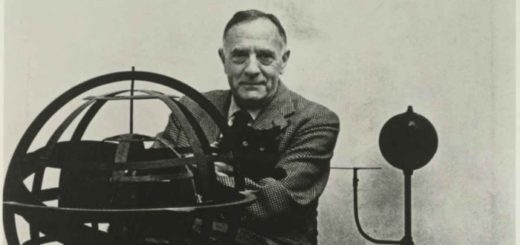Unsolved Medieval Burial Mystery: Why Was This Man Buried With His Face Down?
– When scientists excavated a Medieval cemetery in the Bernese Lakeland region of Switzerland they found as many as 342 bodies which had been buried there between the 8th and 17th centuries.
One of the ancient bodies was buried in an odd way. It was the skeleton of a man who had been placed with his face down. This highly unusual Medieval burial practice remains an unsolved ancient mystery that still makes archaeologists scratching their heads.

What was the reason for putting this man to rest in such an odd way?
Can the artifacts discovered in the grave or the circumstances of his death solve the mystery?
Excavation of the Middle Age grave revealed the man had died under unusual circumstances. Next to the body the archaeologists found a knife and several coins, corroded together into a single block of metal – the remains of a purse.
Archaeologists have put forward several theories that could explain why the dead person was placed with his face down. One possibility is that the burial had to be done in a hurry, leaving no time to prepare the body, for had the dead man been washed first, as was then the custom, the purse would have been found and removed. The tradition of placing objects in the grave along with the corpse had long passed by the time of burial, so then what exactly had happened? Did the poor man die from an infectious disease, necessitating immediate burial?
Another option is that a crime led to a rapid burial. Perhaps this was a case of robbery and murder, or maybe an act of revenge?
One way to get to bottom with the mystery was to examine the man’s purse. Coins often provide valuable information. This was far from easy as the leather had decomposed and the coins had corroded together to form a solid block. Scientists were unable to separate the ancient coins, the danger of damaging them in the process being too great to risk. Instead, an attempt was made to view the block of coins using x-rays.
However conventional x-ray techniques provided no useful information because the thick layers of coins led to severely overexposed images.
A more comprehensive second X-ray study revealed more information though. Inside the purse twenty-four thin coins could be identified in cross-section, some stamped on one side, some on both. X-ray images showed some of the coins were made of two different metals. Early coins were often manufactured from copper-silver alloy and before being stamped they would be immersed in a bath of tartaric acid to dissolve out the copper. As a result, the coin is given a shiny silver surface. One of the coins in the purse was in fact made of pure silver.
Of the coins from the purse which bear the year of manufacture, the latest dates from 1629 so the man must obviously have been buried after then. The coins also provide information about how the man lived. “It is possible he was a traveling merchant, because we found coins in the purse from the Fribourg-Bern-Solothurn, Basel-Freiburg in Breisgau and Luzern-Schwyz regions. At the time each of these areas had their own coins in local circulation,” Christian Weiss, a numismatic expert with the Archaeological Services of Canton Bern said.
“Taken together, the coins are really just small change,” says Weiss. “There is nothing in the purse equivalent in value to, say, a hundred franc note today.” He thinks it is unlikely that somebody took the more valuable coins and left the low value ones behind, and this fact counters the robbery – murder theory. It does not exclude murder for another reason, however, such as revenge. What exactly happened and why the man was buried in such an unusual way will probably remain a secret forever.



 Creators of mankind
Creators of mankind Description of “Tall white aliens”
Description of “Tall white aliens” Where they came from?
Where they came from? About hostile civilizations
About hostile civilizations The war for the Earth
The war for the Earth “Tall white aliens” about eternal life
“Tall white aliens” about eternal life Video: “Nordic aliens”
Video: “Nordic aliens” Aliens
Aliens Alien encounters
Alien encounters The aliens base
The aliens base UFO
UFO Technology UFO
Technology UFO Underground civilization
Underground civilization Ancient alien artifacts
Ancient alien artifacts Military and UFO
Military and UFO Mysteries and hypotheses
Mysteries and hypotheses Scientific facts
Scientific facts


















